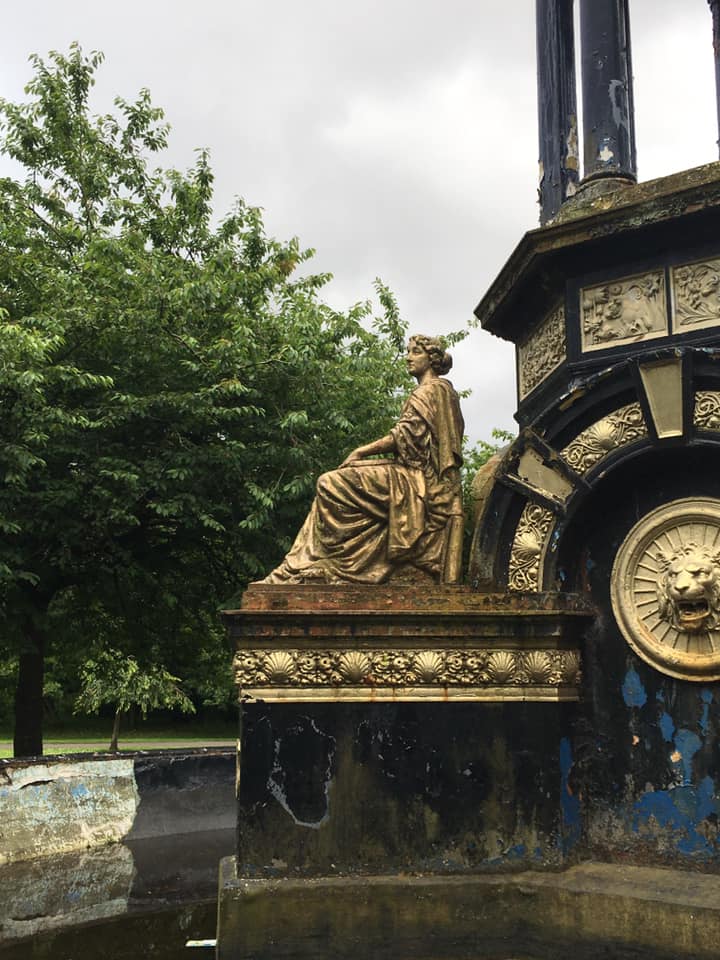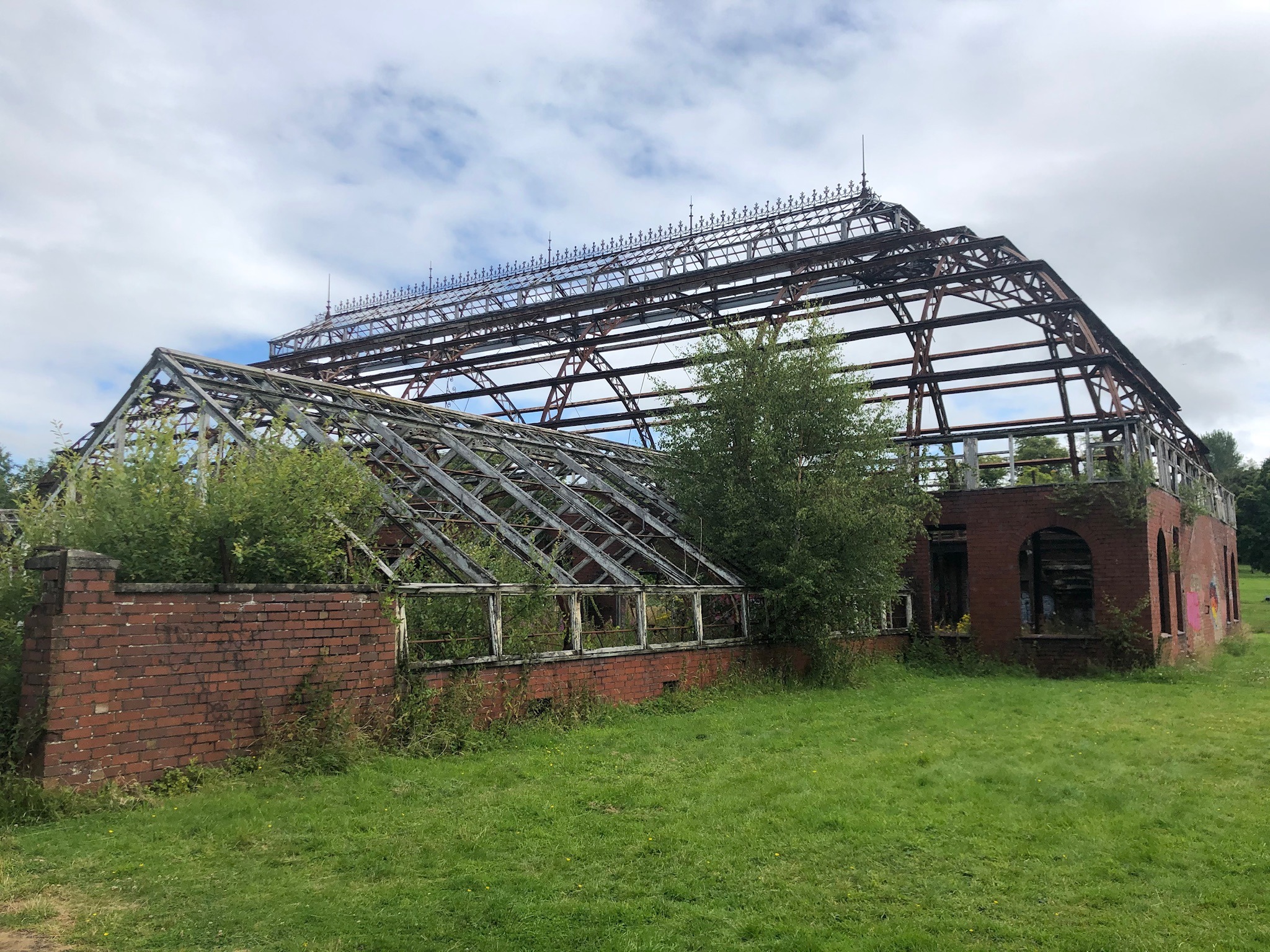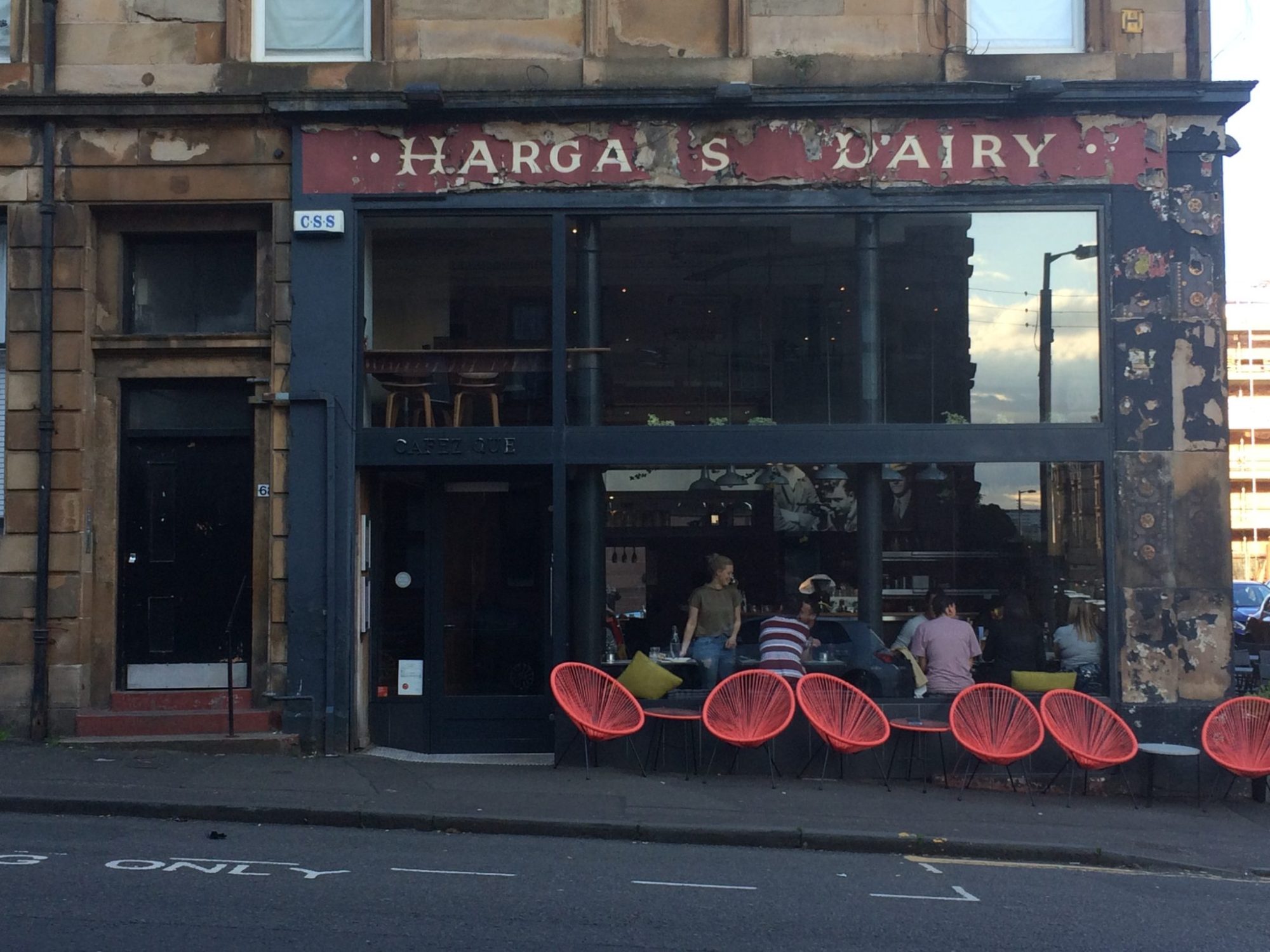By Rachel Kacir, Heritage Outreach Manager
Since March, we’ve all been spending more time in our own neighbourhoods and rediscovering what’s on our doorsteps, with many of us taking to our local parks to exercise, relax and meet friends. With over 90 parks and green spaces in the city, it’s no wonder that Glasgow is known as the ‘dear green place’!
PARKS AND RECREATION
By the late-1800s, Glasgow was one of the fastest growing cities in the world. The people who made up this new community needed employment and homes, but they also needed entertainments to fill their leisure time. Parks were therefore designed with recreation in mind, and often included bandstands and glasshouses for this purpose. In this blog, we’ll celebrate some of these iconic structures, the companies that made them and the groups working to save them.
MACFARLANE’S & CO.
When it comes to Glasgow’s park architecture, one name dominates: MacFarlane’s & Co. Often known as the Saracen Foundry, after the location of their first premises in Saracen Lane, Gallowgate, Macfarlane’s was the most important manufacturer of ornamental ironwork in Scotland. The company had been founded by Walter MacFarlane (1817-85) and specialised in producing fountains, bandstands and architectural crestings and ornament. The firm mass produced patterns designed by leading Glasgow architects, such as Alexander ‘Greek’ Thomson, James Sellars and John Burnet. In 1880 MacFarlane’s nephew, Walter MacFarlane II, became a partner and later took over on the death of his Uncle in 1885. After the war, there was a decline in orders for Saracen’s designs. This was due to a number of factors, including the collapse of the British Empire, the move away from steam power and the introduction of new materials. The works eventually closed in 1966 and the infrastructure was demolished in 1967. However, Saracen Foundry pieces can still be found across the world, including in South Africa, Australia, Canada and Brazil.


CELEBRATED WORKS
MacFarlane’s most celebrated work is the Saracen Fountain in Alexandra Park. It was commissioned as their principal exhibit for the International Exhibition at Kelvingrove Park in 1901. They gifted the fountain to the city and it was relocated to Alexandra Park in 1914. The fountain was restored to working order to celebrate the Millennium in 2000. A blue and gold colour scheme matching its original appearance was chosen. Sadly, the fountain has now fallen into disrepair again. However, Friends of Alexandra Park are working to raise funds to restore it once more.
The Queen’s Park bandstand was also manufactured by MacFarlane’s. It drew large crowds to listen to concerts. It was later moved to Duchess Park, Motherwell, in the 1920s. It was replaced in 1930 by a new bandstand with amphitheatre style seating. The bandstand burned down in 1996, with only the terraces remaining. Now redeveloped, the bandstand is known as Queen’s Park Arena and hosts a variety of events. It’s not the only bandstand to have been given a new lease of life. In 2014 Glasgow City Heritage Trust grant-aided £20,000 as part of a £2.1 million project to restore the Kelvingrove Bandstand and Amphitheatre. Built in 1924, it is the only original one left in Glasgow and now hosts open air music events.
MacFarlane’s also produced the components of the Kibble Palace, the jewel in Glasgow’s Botanic Gardens crown. Originally built by John Kibble as a conservatory for his home on Loch Long, it was later dismantled and shipped up the Clyde and then the Forth & Clyde Canal to the Gardens. It was initially used as an exhibition and concert venue, before being used for growing plants from the 1880s. Benjamin Disraeli and William Ewart Gladstone were both installed as rectors of the University of Glasgow in the palace, in 1873 and 1879 respectively.
SIMPSON & FARMER
Whilst MacFarlane’s were best known for fountains and bandstands, Simpson & Farmer actually led the way when it came to glasshouses. Describing themselves as ‘Horticultural Builders, Heating and Ventilation Engineers of Patrick Bridge’, they were responsible for the glasshouses, or ‘Winter Gardens’, in Tollcross, Springburn and Queens Parks amongst others.
Tollcross Winter Gardens were originally built in 1870 at Adrossan. They were gifted to Glasgow Corporation in 1898 by Bailie A.G. MacDonald of Redholm, Adrossan, an ex- Convener of the Parks Committee, in commemoration of his association with the East End. They were removed from Ardrossan and re-erected in Tollcross Park by Simpson & Farmer. The Glasshouse was closed in the 1980s and much of the steel framework was lost due to vandalism. It was restored in the late 1990s-early 2000s, but storm damage during the winter of 2010-11 led to it being closed again. Sadly, the Winter Gardens are once again classed as ‘At Risk’ on the Buildings at Risk Register for Scotland. There have been recent reports of plans to restore them once more to create an events and exhibition space and an early years centre adjacent.
Springburn Winter Gardens were built by Glasgow Corporation as a condition for accepting a £12,000 gift from local benefactor Sir Hugh Reid to finance the construction of the nearby Springburn Public Halls. The Winter Gardens, the largest in Scotland, were much loved for their displays of exotic plants and for the concerts and exhibitions held there. Unfortunately, the Gardens have remained derelict for some time due to major structural problems. Springburn Winter Gardens Trust, a community led organisation, are working to restore them.
Queens Park glasshouse was also sadly closed in 2020 and work began to remove its dome, which was in an unsafe condition. It is hoped the dome can be restored. Friends of Queens Park are working with Glasgow City Council and others to ensure the long term sustainability of the facility.
DEVELOPMENT GRANTS
Do you have ideas for a Building at Risk and would like some help? Our Development Grants are for finding solutions to challenges affecting Glasgow’s historic buildings or neighbourhoods. They support projects in their early stages, assisting with their development, for example through feasibility studies and options appraisals. Find out more here




